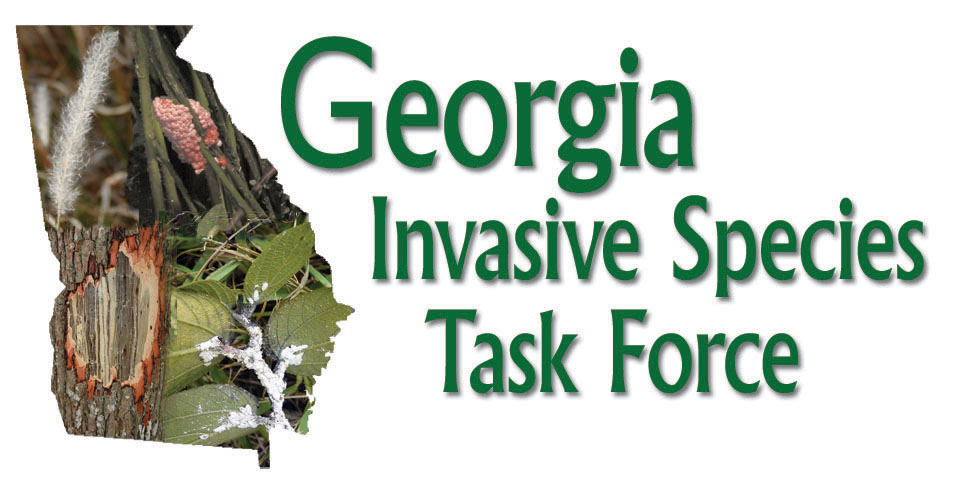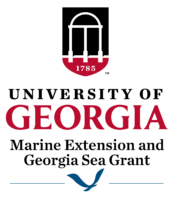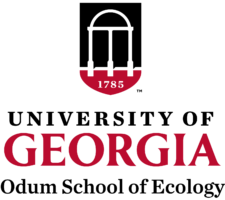UGA – Center for Invasive Species and Ecosystem Health
Established at UGA in order to address issues on invasive species and ecosystem (agricultural, forested, and natural system) health, the Center evolved from the Bugwood Network, a project that developed through faculty cooperation between the College of Agricultural and Environmental Sciences and the Warnell School of Forestry and Natural Resources at the University of Georgia.
The Center’s goals include:
- becoming a preeminent national and international public service and outreach center;
- developing collaboration between UGA and state, university, federal and international partners; integrating and developing information and programs;
- serving as a clearinghouse for information, applied research, and training;
- and promoting public awareness, education, and applied research.
Currently, the Center is developing and administering 20 educational web systems, seeking and archiving digital images in four topic-based web systems to support educational activities, managing the Georgia Cooperative Agricultural Pest Survey Program, developing policy and protocols for early detection and rapid response of invasive species, developing and administrating the Early Detection and Distribution Mapping System for the Southeast Exotic Pest Plant Council and the Everglades Cooperative Invasive Species Management Area, applying herbicide research on emerging invasive plants, and facilitating and extending program development in Europe and Central America.
In addition to the above, the Center also assumed management of the Georgia Invasive Species Task Force. The Task Force was created in collaboration with the Georgia Forestry Commission, USDA Forest Service, USDA APHIS-PPQ, Georgia Department of Agriculture, the Bugwood Network, and the Warnell School of Forestry and Natural Resources to expand involvement and cooperation of state agencies, non-government organizations, and other interested parties to address invasive threats in Georgia.
UGA - College of Agricultural and Environmental Sciences - Aquaculture Unit (CAES)
The CAES provides research, teaching, and extension (or public service) at the undergraduate and graduate levels in a variety of specialties, including Agriculture and Environmental Sciences.
The Aquaculture Unit is specifically charged with providing information regarding aquaculture, fisheries, and freshwater pond issues (including aquatic plant management, fish population management, and fish disease diagnostics).
Through Cooperative Extension, CAES is often the first point of contact when a member of the public observes an aquatic invasive species.
CAES also provides training to county extension agents, fish farmers, fish hobbyists, county governments, and others regarding invasive species issues, and has direct contact with private individuals involved in interstate transportation of fish and invertebrates through its extension programs.
CAES conducts pesticide testing for effective control of aquatic plants and snails. Faculty members work with the CAES, the Warnell School of Forestry and Natural Resources, and the Georgia Department of Agriculture to provide training for aquatic pesticide applicators several times each year in several locations across the state. This training involves private applicators, biologists for the GADNR, and cooperative extension agents.
Public education is conducted in conjunction with aquatic pesticide applicator training. Faculty members also act as advisors to the Georgia Aquaculture Association.
UGA - Marine Extension Service (MAREX)
MAREX conducts research programs to monitor coastal aquatic invasive species and documents their biology and ecology as well as conducting outreach efforts to increase public awareness and modify behaviors in order to prevent new introductions and reduce the further spread of existing problem species.
MAREX’s restoration activities include the formation of GEORGIA: Generating Enhanced Oyster Reefs in Georgia’s Inshore Areas. A hands-on volunteer-based oyster shell recycling program that broadens public awareness of oyster ecological functions, promotes a sense of stewardship, and restores lost oyster acreage.
MAREX’s public education and outreach activities include the Aquatic Invaders program; public surveys to gauge understanding of aquatic invasive species issues; “Have You Seen Me?” sheets; aquatic invasive species fact sheets; Camden County 4-H officer training, development of an aquatic invasive species volunteer monitoring manual; future incorporation of aquatic invasive species prevention best practices into the Georgia Clean Marina program; development of educational rack cards, booklets, and posters on aquatic invasive species; and work on a public service announcement to highlight aquatic invasive species and prevention tips.
In addition, MAREX will conduct a volunteer monitoring program for coastal fouling communities that will operate through the existing Adopt-A-Wetland program.
MAREX conducts port surveys, participates in Mytella dock sampling, and hosts the Aquatic Invaders Zoo & Aquarium program, and also compiles volunteer monitoring data and public reports from “Have You Seen Me?” flyers and publishes the data in peer-reviewed research papers.
MAREX conducted a literature review for fish, mollusks, crustaceans, and polychaetes in the South Atlantic Bight, and created a regional GIS database as part of port surveys. In all, the database now contains information from a total of 104 publications, representing locality information for 2,533 species.
UGA – Odum School of Ecology (Odum School)
In addition to having several faculty members who actively research invasive species, the Odum School participates in UGA’s Species Invasions Science (SIS) group and also hosts the Drake Research Group.
These groups bring together individuals interested in the study of invasive species.
The SIS group is interested in all aspects of the scientific study of species invasions.
This includes the study of species-specific strategies for management, the search for general patterns and laws of species invasion, and the effort to use invasions as a source of insight to better understand the ecological and evolutionary processes that govern the natural world.
SIS is an interdisciplinary and interdepartmental group comprised of individuals from the Odum School, the Warnell School of Forestry & Natural Resources, the Department of Genetics, and the Department of Crop and Soil Sciences.
One of the primary functions of SIS is to provide a forum for the exchange of knowledge and expertise among invasion science practitioners.
Research by the Drake Research Group is devoted to integrating theory, statistical modeling, and conducting experiments to solve basic and applied problems in population ecology. Applied projects have focused on invasive species to answer such questions as how many individuals of a species it takes to establish a viable population, what characteristics predispose species to be good colonizers or having strong impacts on ecosystems, and where and how fast invading species will spread.
UGA - Warnell School of Forestry and Natural Resources (Warnell School)
The Warnell School conducts extensive programming to train professional resource managers, extension agents, landowners, and the general public on invasive species issues, identification, and management.
The Warnell School developed the Early Detection & Distribution Mapping System (EDDMapS) for use by the eight Southeast Exotic Pest Plant Council state members.
EDDMapS has now expanded to projects in the Florida Everglades for all taxa mapping of invasive species and is being considered for implementation on additional regional and national projects.
The Warnell School conducts extensive invasive species outreach programming along with the development and publication of identification and management guidelines, control recommendations, and web resources.
The Warnell School is also part of the Species Invasions Science group and the Center for Invasive Species and Ecosystem Health.





